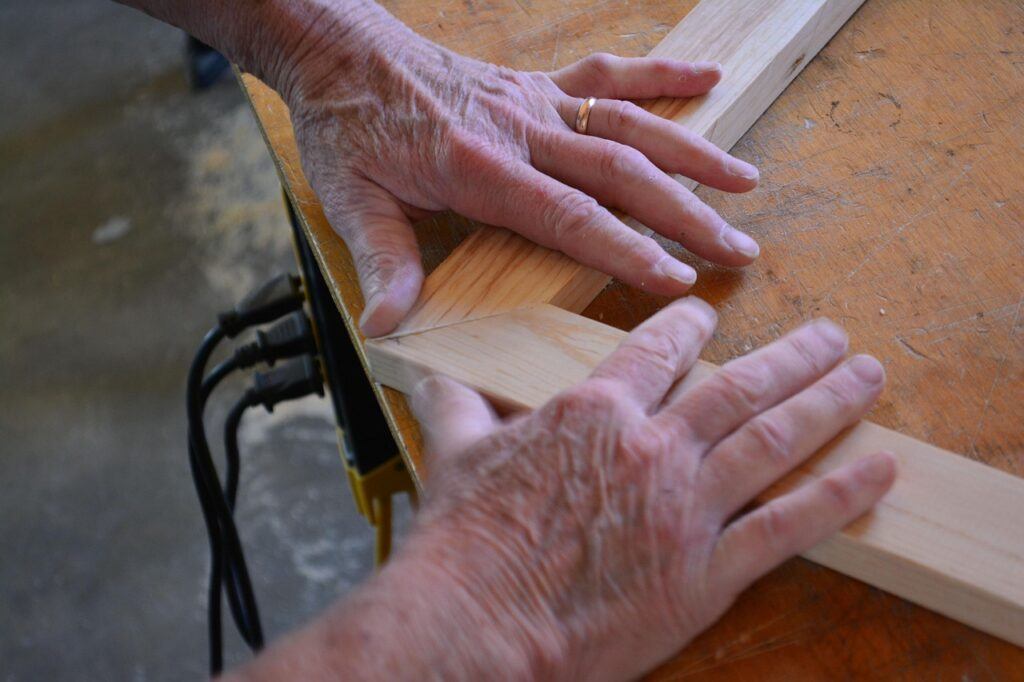
Woodworking is more than just cutting and sanding; it’s an art that involves creativity and skill. Imagine taking a plain piece of wood and crafting it into something that stands out in your home or gifts with pride. This hobby offers a unique blend of artistry and precision engineering, letting you create practical, innovative, and artistic items.
Working with wood has incredible benefits. It’s therapeutic, a great stress reliever after a long day. As you learn woodworking, you’re not just building items. You’re building skills, patience, and your creative muscle. Completing projects boosts your confidence and gives a sense of accomplishment that’s hard to match.
Woodworking has been around for centuries. From ancient Egyptians crafting chariots to modern DIY enthusiasts making furniture, the craft has evolved, but the essence stays the same. It’s a journey from trees to tools and techniques, each step rich in history and tradition. This legacy makes woodworking not just a hobby but a continuation of age-old practices.
Whether you’re in it for the cool DIY projects or the joy of creating something from scratch, woodworking has something for everyone. Starting this journey can be your gateway to a fulfilling new pastime, a way to unwind, and a source of endless creativity. Grab a piece of wood, and let your imagination take the lead.
Essential Tools and Materials Every Novice Woodworker Should Have
Jumping into woodworking without the right tools is like trying to fish without a rod. The beauty of this craft is that you don’t need a whole fancy setup to start. Just a few essentials tools can get you crafting. Let’s talk about the basics: a hammer for nailing things just right, a saw for cutting through your timber, a measuring tape to ensure precision, chisels for shaping, and a set of clamps to hold everything steady. These are your go-to items when starting out.
Choosing the right wood is a whole adventure on its own. Hardwoods like oak and maple are known for their durability, making them great for furniture. Softwoods such as pine are lighter and easier to work with, perfect for projects like picture frames or small shelves. Knowing which type suits your project is like picking the right ingredient for a recipe—it makes all the difference.
Safety might not sound exciting, but trust me, it should be your best friend in this craft. Essential gear like safety goggles, dust masks, and ear protection keeps you safe from sawdust and loud noises. Plus, getting familiar with safe practices helps you avoid nasty surprises when working with sharp tools.
Now, let’s be real. Good tools can be pricey, but starting with budget-friendly options doesn’t mean compromising quality. As you gain experience, you can slowly invest in high-quality tools, but for now, aim for a balance between cost and function. Remember: it’s not about having the most expensive equipment, but about knowing how to wield what you have with skill.
Mastering Basic Techniques: Your Roadmap to Woodworking Excellence
Woodworking might seem a bit overwhelming at first, but breaking it down into simple techniques makes it all manageable. Start with the basics: measuring accurately, cutting precisely, joining pieces seamlessly, and finishing to perfection. Each skill adds to your toolkit, helping you tackle more complicated projects down the line.
Creating your first project is a moment to savor. Begin with something straightforward like a small shelf or a cute wooden box. You’ll get practical experience and a boost in confidence seeing your creation take shape. Plus, it gives you a tangible goal to work toward as you practice your new skills.
For the visual learners out there, online resources like video tutorials offer immense help. Watching seasoned artisans demonstrate techniques gives you an added boost in understanding and applying what you learn. It’s like having a personal mentor guiding your moves.
Everybody stumbles a bit when learning new things. Common beginner mistakes, like misaligned cuts or loose joints, happen. But hey, they’re part of the learning curve. By identifying and addressing these issues early on, you pave a smoother path for future projects.
Embrace each cut, each join, and each finish. With patience and practice, you’ll find your rhythm and start creating pieces you’ll be proud to show off.
Taking Your Woodworking Skills to the Next Level: Crafting with Confidence
Once you’ve got those basic woodworking skills under your belt, the real fun begins. Upgrading to more complex projects doesn’t just happen overnight, but with each piece you complete, your skill set grows, and so does your confidence.
Inspiration is everywhere if you know where to look. From online galleries showcasing elegant designs to woodworking communities buzzing with fresh ideas, finding that perfect project becomes an adventure. Engaging with fellow woodworkers can provide insights, tips, and a shared passion that keeps your excitement alive.
Patience is a woodworker’s most trusted tool. Each step you take is a chance to learn and improve. Embrace the little imperfections along the way. Continuous learning isn’t just a pathway to expertise; it’s what makes the journey enjoyable and fulfilling.
Your finished items aren’t just projects; they’re a testament to your growing expertise. Display them in your home, gift them to loved ones, or even consider selling your work to those who appreciate handcrafted items. Share your journey and accomplishments with pride, knowing that each piece reflects the skills and creativity you’ve nurtured.
